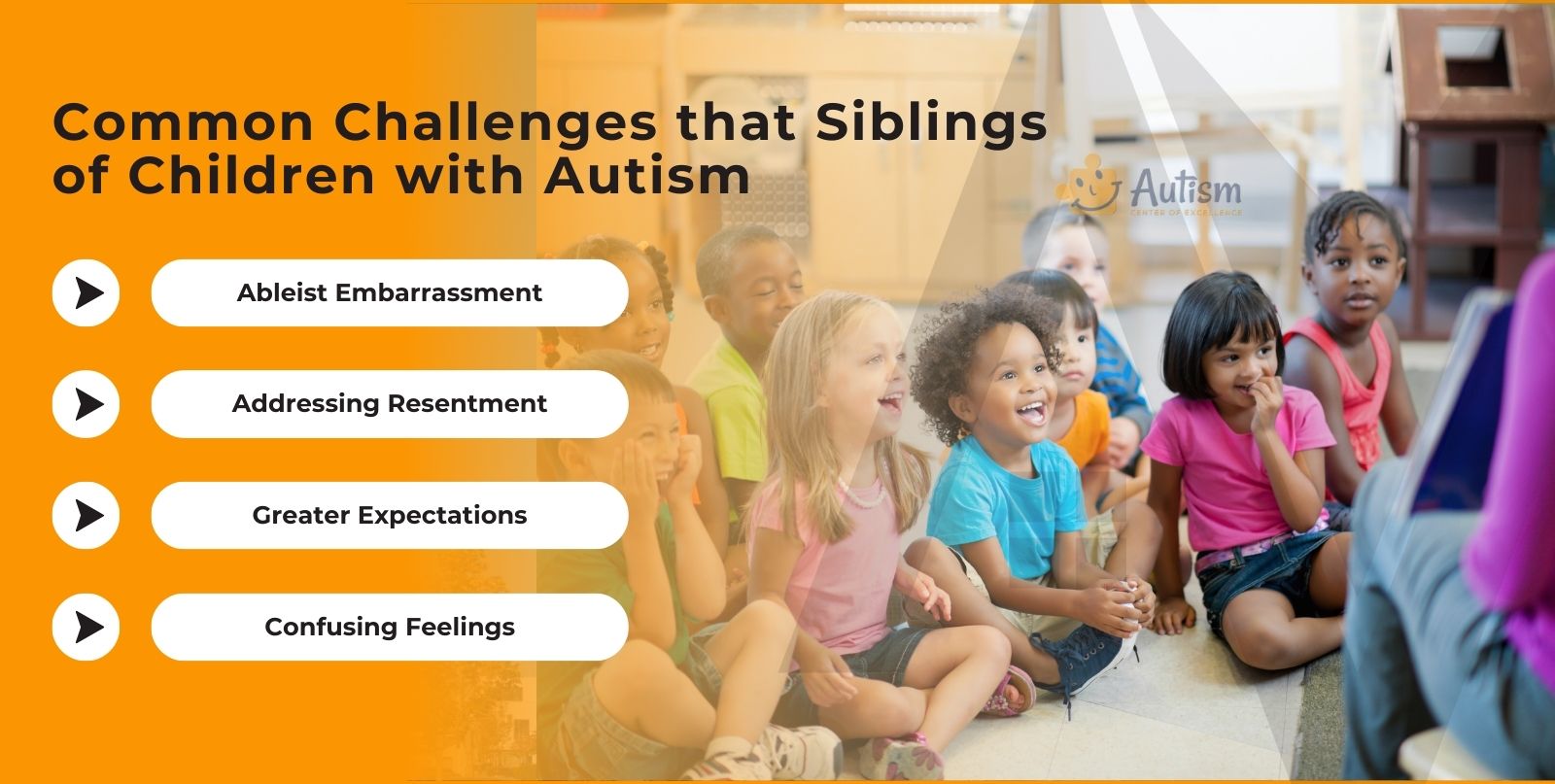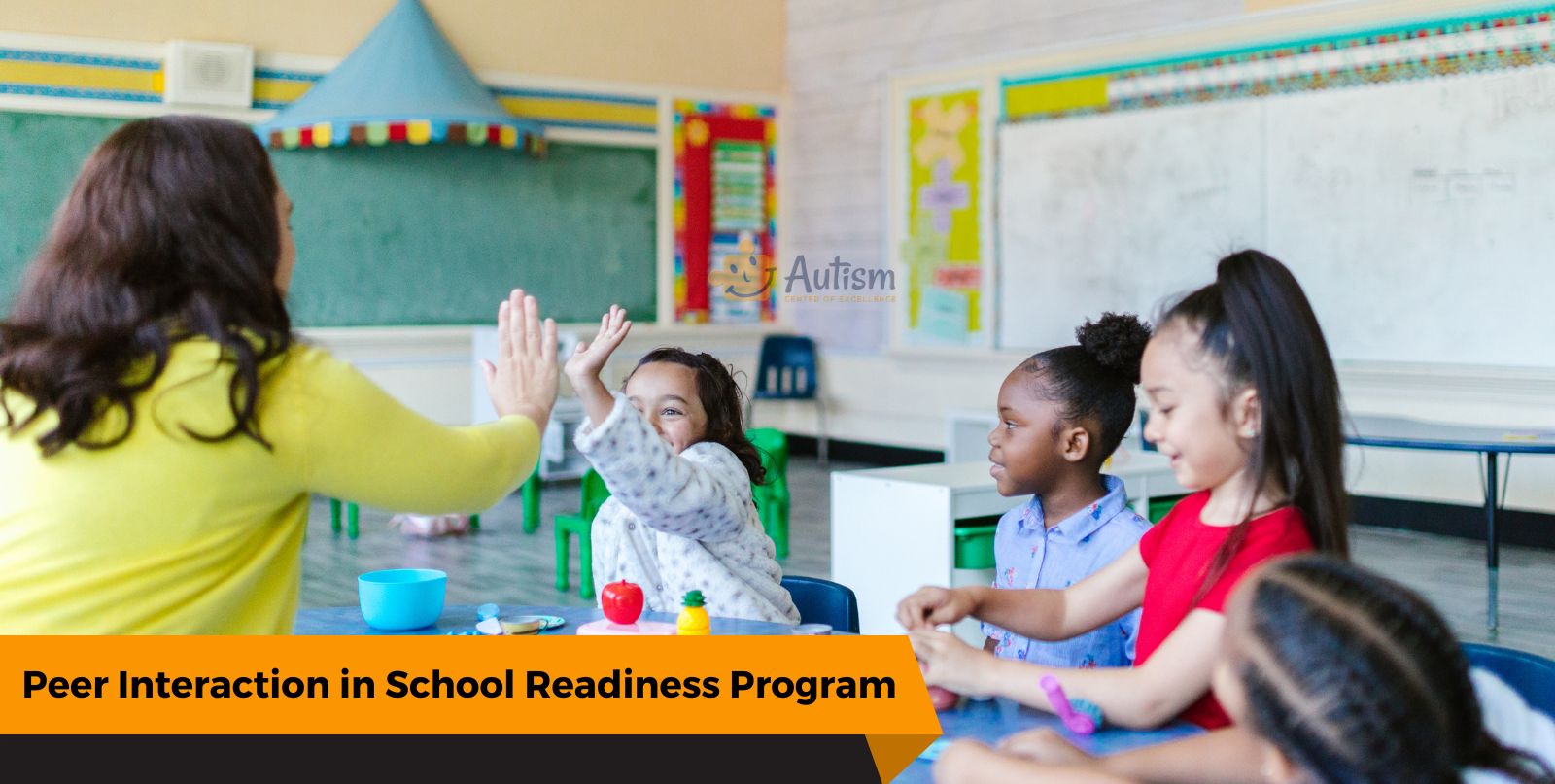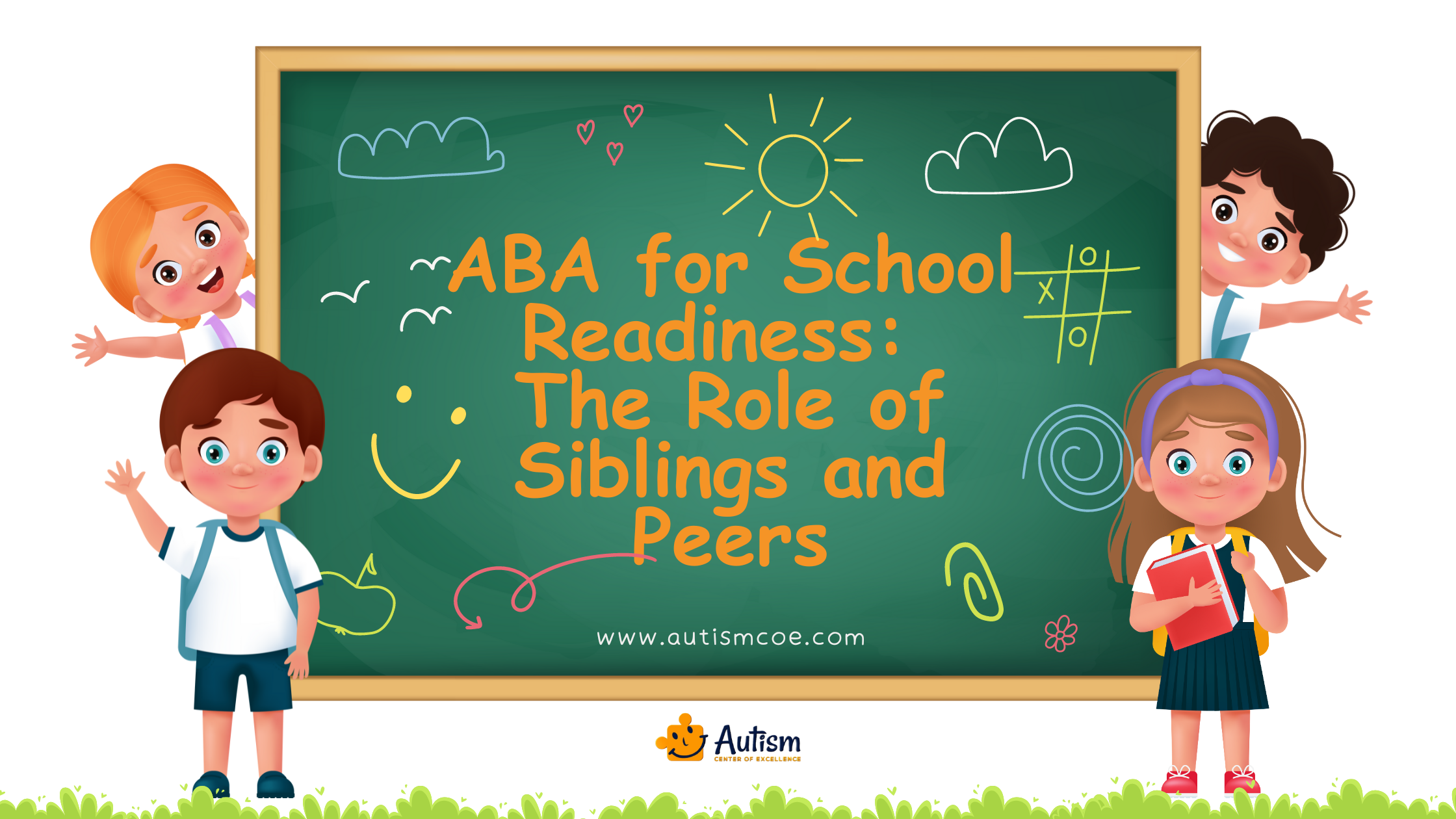Children on the autism spectrum do not want to be social and do not like to have friends is a common myth. Actually, they find it hard to initiate and maintain social interactions with their peers. This could be a result of different conditions such as Speech and Communication Difficulties, social cues, and sensory processing. Nevertheless, studies have proven that under the guidance of well-trained professionals and teachers, children with autism can become exceptionally sociable and initiate close friendships with peers.
Collaborative skill is an important skill, which children should develop to be successful at School and beyond. Children with autism have a particularly hard time developing collaborative skills. Collaboration skills are among the social and communication skills that children with autism can learn through the well-researched treatment method known as ABA therapy.
What are some Common Challenges that Siblings of Children with Autism Face?
Siblings of children with autism face unique challenges that affect their general well-being and mental health. Some the most common difficulties faced by siblings of children with autism are:
👨⚕️ Ableist Embarrassment:
An autistic sibling’s actions may cause siblings to be embarrassed or ashamed of their behavior and this can lead to isolation and anxiety.
👨⚕️ Addressing Resentment:
Siblings might be hostile towards an autistic sibling as they need extra attention and care from parents.
👨⚕️ Greater Expectations:
Siblings as they grow older may feel responsible to shoulder more duties and to assist their autistic sibling.
👨⚕️ Confusing Feelings:
The siblings may experience fear, anger, or embarrassment in relation to their sibling who has autism.
Parents and other caregivers must provide resources and support to siblings of children with autism in order to assist them overcome these obstacles.

What are some Common Factors that Contribute to Sibling Rivalry?
Children who grow up in the same family are vulnerable to sibling rivalry. Blood relatives, step-siblings, and even adopted or foster siblings may experience it. Sibling rivalry can be exacerbated by the following factors:
🚀 Major Life Changes: On the other hand, living in a new house, waiting for a baby, or getting a divorce may be killing for all family members. Most kids direct their anger and anxiety towards the nearest victim and who else is closer than their sibling.
🚀 Ages and Stages: Specially stages of development, when sibling rivalry is more pronounced include if both children are under the age of four or when the age gap between children is very big or very small.
🚀Jealousy: A child can have a feeling of envy of the applause or attention of the parents to their brother or sister.
🚀 Individuality: Children innately want to set themselves apart, even from their siblings. Challenges of who can construct the highest skyscraper, who can drive the fastest car, or who can eat the most waffles can occur.
🚀 Lack of Conflict Resolution Skills: When your kids frequently see you and your partner fighting loudly or aggressively, they may copy that behavior.
Sibling rivalry is natural and can be controlled with tolerance, understanding, and proper communication. Parents’ sowing of some seeds of peace may make their children act as friends as opposed to mortal enemies.
The Role of Sibling Interaction in School Readiness Program
Siblings do play a significant role in School Readiness. They can assist their younger brothers or sisters in getting social and cognitive skills that are extremely important for school. For instance, older siblings act as role models for younger siblings and help them learn how to share, take turns, and communicate with other people. Furthermore, they can offer moral support and inspiration, hence, making the younger siblings feel more empowered and determined to study. The research revealed that siblings who are involved in positive interactions with each other will have better social skills and academic outcomes.

Peer Interaction in School Readiness Program
One of the factors that enhance school readiness is peers. Research has revealed that peer relationships help students to be involved both in school activities and outside school activities. Children can learn social and Emotional Skills from their peers which are critical to successful functioning in schools. For instance, peers offer children the chance to develop their communication, cooperation, and problem-solving skills. They also offer emotional support and motivation and as a result, children become more comfortable and encouraged to learn. Peers offer the feeling of being part of a group and social relatedness that can make children more relaxed and involved in class.
Join Our Weekly Newsletters!
Subscribe now to stay updated with our latest email updates.
Frequently Asked Questions & Answer
What is The Role of Siblings in Autism?
Siblings should have the freedom to decide the level of involvement they want to have in their brother or sister’s life who has autism. Do not have high hopes concerning your siblings. The majority of siblings are bestowed with the role of caregiving their disabled sibling at some time in their lives.
What are the Roles of Siblings?
The environment is provided by brothers and sisters in which children and young people are protected and taken care of. Be a role model to your siblings.
How Can a New Sibling Affect a Child's Development?
This makes some children frightened and irritable, they go back to baby habits and are very demanding. Some children are petrified of being “replaced” by the new baby. All of this is normal and their adjustment, but you need a whole lot of patience and understanding.
What are the Benefits of Including Siblings in The Treatment of Autism Spectrum Disorders?
Siblings influence family experiences and learning opportunities that promote proactive skills and experiences for an individual with ASD.
Conclusion
Sibling and peer interactions are both components of school readiness. Children with autism can be thought to live fully but not independently in their daily lives. This is best achieved when children are involved in peer activities as contrasted to being involved in sibling activities that allow them to be independent. It is, therefore, important to note that siblings will help a child develop social and emotional skills while peer interaction will help a child develop a sense of belonging and connectedness to their We can assist these children in reaching their full potential and living successful lives by promoting the critical role of the ABA therapy in their collaboration skills development.
Please Note: The content of this blog is for informational purposes only and should not be considered a substitute for professional medical advice, diagnosis, or treatment. Consult a qualified healthcare professional for personalized guidance tailored to your specific situation.

Bhavika Bhasin
Bhavika Bhasin is the Research and Marketing officer at AutismCOE. She works with children and adults with ASD. Her clinical research includes evaluating various available autism screening and diagnosis methods and their efficacy. She is currently developing a novel screening exam that is indicated to be more accurate than the existing available exams. She is also writes articles papers for various publications.


